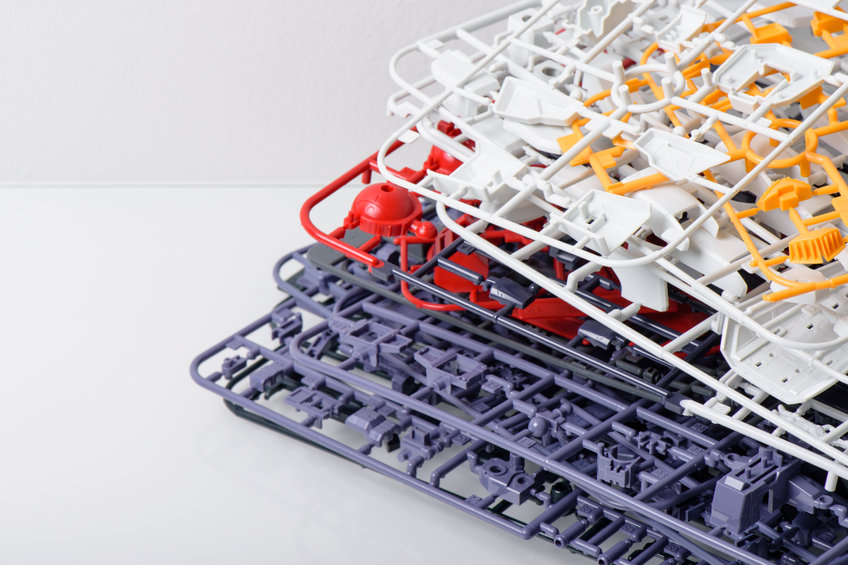Plastic injection molding as a process marries intricate design work with precise manufacturing at a mass scale to produce multiples upon multiples of highly-detailed plastic parts very quickly. And the injection molding process accomplishes this task expertly. But even the best processes still contend with errors, issues, and the occasional defects.
Fortunately, skilled plastic injection molders with experience — such as the team at Hansen Plastics, Corp. — are dedicated to the methodology of continuous improvement. To that end, they are aware of the most common injection molding defects and have worked on ways to best avoid them at various stages of the injection molding process. Because by focusing on these areas, the team at HPC can work proactively to minimize the potential for defects, and ensure their customer’s products are manufactured with the expected precision and quality they have come to expect.
Flow Lines and Weld Lines
Flow lines are lines, waves, or ring patterns that appear on the surface of a part, noted by their slightly different color from the rest of the piece. These lines usually appear on the narrowest portion of the part, and appear to originate from the mold’s gates, where the molten resin flows into the mold to form the part. These lines are typically more of an aesthetic issues, posing no major structural threat to the part’s integrity.
Weld lines are can be similar in appearance to flow lines, in that they are lines on the part’s surface that are of a slightly different coloration compared to the rest of the part. However, these lines occur when two materials meet during the molding process, but one material cools faster than the other. This leads the two materials to form an inadequate bond.
Because flow lines and weld lines are caused by portions of the part cooling at different rates, leaving some of the material to cool after the rest of the part is formed, inconsistent flow speed and pressure are the typical culprits. To solve both of these issues, flow speed and pressure need to be maintained consistently throughout the molding process to account for temperature and cooling differences across the surface area of the part, and while working with different materials during multi-material molding.
Sink Marks
Sink marks are areas on the surface of a part where a depression is formed as the molded part cools. As the inner portion of a part cools, it pulls the material inward, causing the still warm portions of the part to form into a depressed divot or impression. Sink marks could cause part failure, depending on where the sink mark occurs.
Sink marks are typically the result of pressure being held at too low of a point during or after molding, or too short of a cooling and hold time after molding. It can also be the result of too thick of material being used in the walls of a part, leading to an overall slower cool time in the part. Avoiding sink marks requires maintaining consistent pressure during and after molding, holding and cooling for longer periods of time, and adjusting wall thickness as needed.
Burn Marks
Burn marks are probably the most self-explanatory defect — they are areas of burned black discoloration that appear on a part’s surface. These marks both affect the aesthetic look of a part after being molded and, depending on where or how severe the burn is, can affect how the part functions or the part integrity. These marks are caused by improper venting, using too high of a melting temperature, or too fast of injection speeds.
Preventing burn marks comes down to being more precise with the melt and mold temperatures and ensuring a consistent injection speed that is not too fast, to keep air from becoming trapped in the mold. It’s also important that the mold cycle is controlled, so that air can be properly vented from the mold before it can overheat.
Short Shots
Short shots are areas in the piece that do not fully form during the molding process. They are points where parts could have severely limited functions, depending on where the short shot occurs, and they are very significant part aesthetic issues. Short shots are the result of areas where flow is restricted in the part’s mold during injection. This could be the result of several factors, including too narrow of a gate or channel, higher viscosity material having issues flowing through the mold, inadequate molding temperature, trapped air pockets, or pressure issues.
To resolve short shots, the mold itself may need to be redesigned for larger channels and gates to accommodate the material needed for the part. A different material may also need to be considered so that it can flow more easily through the part’s mold during the injection. A consistent higher mold temperature may help as well.
Manufacturing and Molding Consistent Quality Parts with Hansen Plastics
As seen above, a variety of issues are the result of inconsistent temperature, pressure, or flow during the molding process. This is why quality injection molding relies so heavily on one aspect: consistency.
To maintain consistency and quality, Hansen Plastics utilizes a specific molding process known as Scientific Decoupled MoldingSM, where sensors are strategically placed inside of mold and controlled through RJG software. This software allows HPC molders to precisely control the injection speed and pressure throughout the molding process, as well as increase or decrease the molding temperature, allowing molders to adjust in real-time to avoid issues caused by temperature, pressure, and flow changes. Combined with a commitment to continuous improvement, Hansen Plastics is able to utilize technology and service to guarantee the highest satisfaction for their customers by providing the quality molded parts they rely on for continued business success.
For over 50 years, Hansen Plastics has been committed to building long-lasting relationships with customers, which requires an unwavering dedication to quality and consistency in injection molding, to help establish and retain trust. If you are looking for a trusted, experienced plastic injection molder to handle your products, reach out to HPC today, or visit HansenPlastics.com for a full view of HPC’s capabilities.



